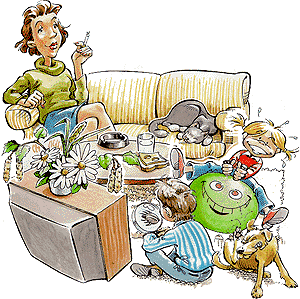
"Ok Doc, so you tell me that LDL is BAD and HDL is GOOD. How do I lower my LDL levels and increase my HDL levels?"
Why do you have high cholesterol in the first place?
I had a 43 year old male patient this week who was sooooooo happy to find that his cholesterol levels are so good even though, he claims that he eats really unhealthy hawker food and never excercises! Then I had this 42 year old female patient who is very strict about her diet, eats rolled oats every morning, takes cholesterol lowering medications, excercises regularly and yet has a high cholesterol level.
What does this tell us? It tells us that having a cholesterol problem is not solely based on what you eat and whether you excercise. If you have a cholesterol problem, it is because your liver is not able to regulate the cholesterol levels well. Your liver actually makes cholesterol for the your body's needs. It is a neccessary ingredient for buiding and repairing body tissues. Now if your liver somehow does not get rid of the bad cholesterol quick enough then cholesterol levels in the blood rises leading to problems.
So, for those unlucky enough to have a high cholesterol problem, you need to help your liver regulate cholesterol by eating less cholesterol rich foods. About 60% of all the cholesterol circulating in your body is made by the liver and 40% comes from what you eat. So by controlling your intake of cholesterol rich food, you can significantly influence your cholesterol levels.
You are what you eat!!
There are actually two different classes of food. One you should avoid and one you should eat more of.
Ones you try to eat less
These are the food that are high in Saturated Fats. In general, cholesterol comes only from animal fats but it is also necessary to reduce Saturated fats from plant souces as well.
The list is very long, but I just give you some categories to remember:
- Egg yolks (white is ok)
- Milk products like soft cheeses, butter and cream
- Meats - Any fatty meat is bad, Sio Bak, Lard, Sausages, Luncheon meat, chicken skin etc
- Organs - Kway Chap, Foie Gras, Chicken livers etc
- Deep fried Stuff - Chips, Fries, KFC etc
- Nuts that have lots of oil, like macademia and cashews
- Coconut cream!! All the yummy lemak stuff
- Dressings- all the creamy ones like mayonnaise and thousand island
- Seafoods - Cavier, fish roe, Crab roe (hairy crab), Prawns.
- Snacks, Desserts, Pastries, Ice Cream
Ones you eat more because they help lower Cholesterol levels
- Oatmeal contains soluble fibres which help lower LDL (Good old Quaker Oats)
- Walnuts and Almonds
- Omega 3 fatty acids: There are 2 main sources. Fish such as Mackeral, Tuna, Trout and Salmon and plant sources such as Flaxseed, Walnut, Soybean oil and Canola oil
Contrary to popular belief, soybeans have not been shown to actually lower cholesterol levels
More info can be found here
When do I need to take medications?
Different strokes (pardon the pun) for different folks!! It all depends on your risk factors and how high you cholesterol is. We usually advise patients to try dieting first and if that doesn't bring the cholesterol down to an acceptable level then medications are started.
Conclusion
In this blog, we discussed about how to lower your LDL cholesterol, which is essentially through diet control. In my next blog, we will talk about how to raise your HDL levels. Remember that the old adage is true, you are what you eat!










